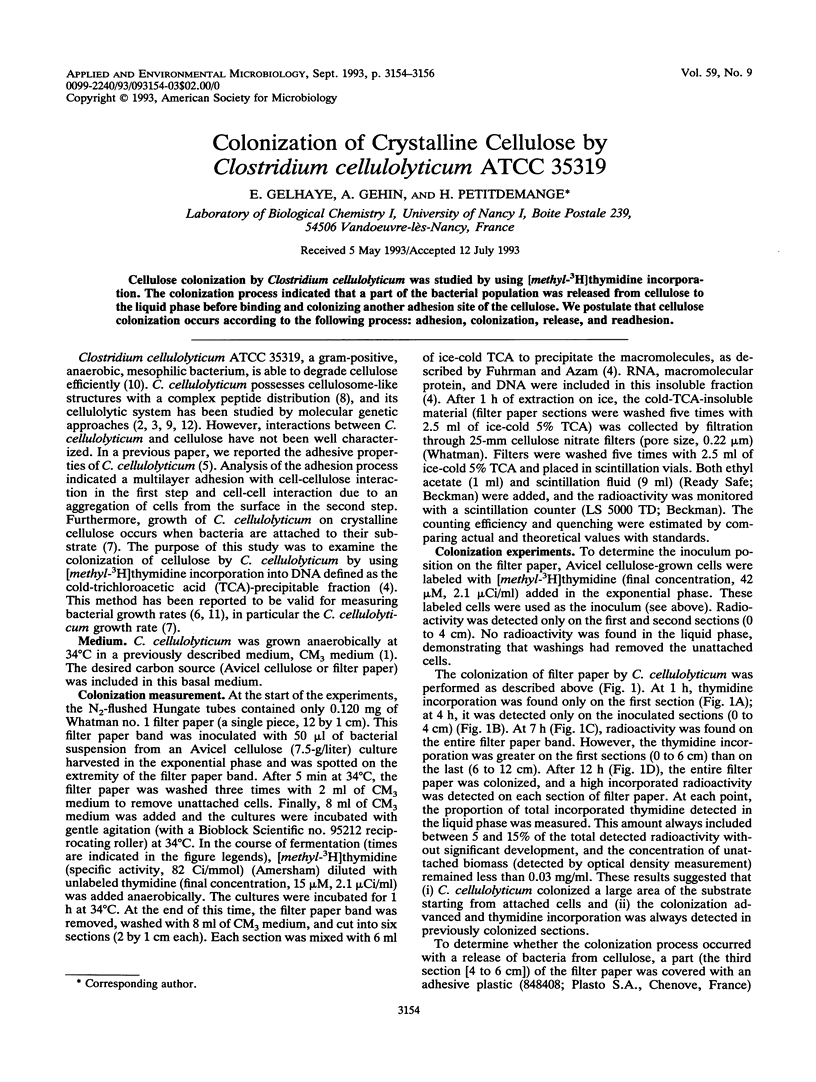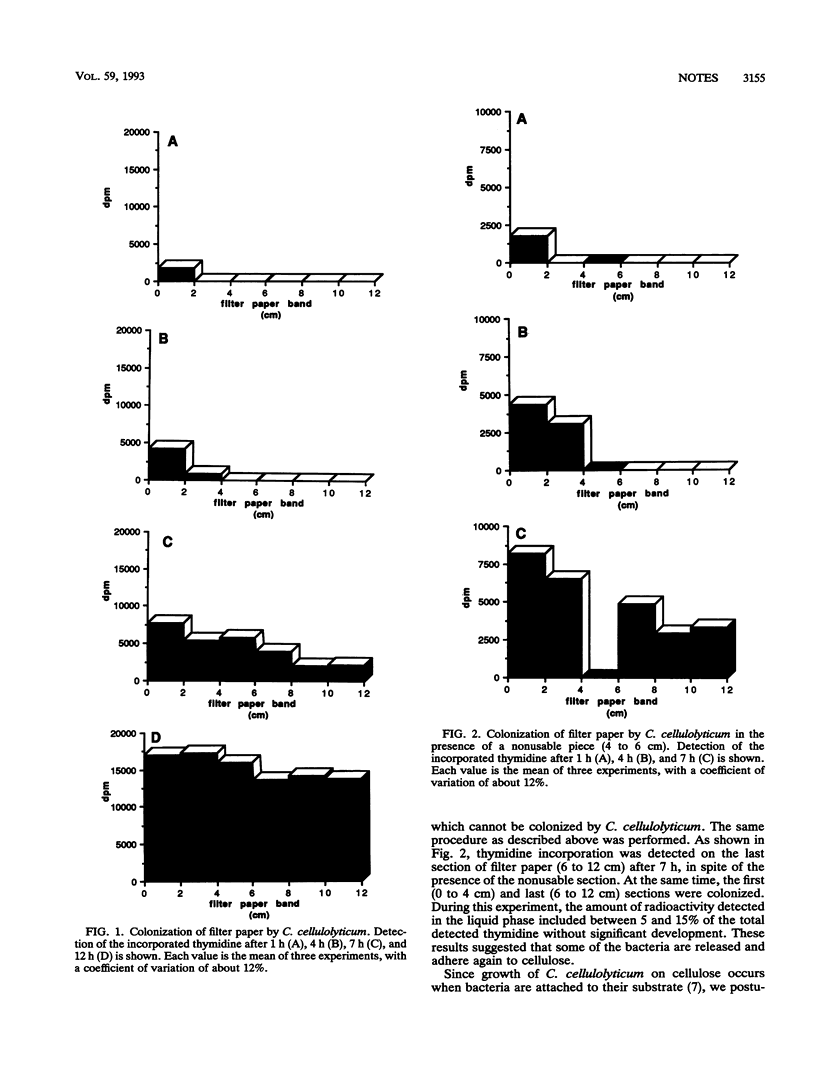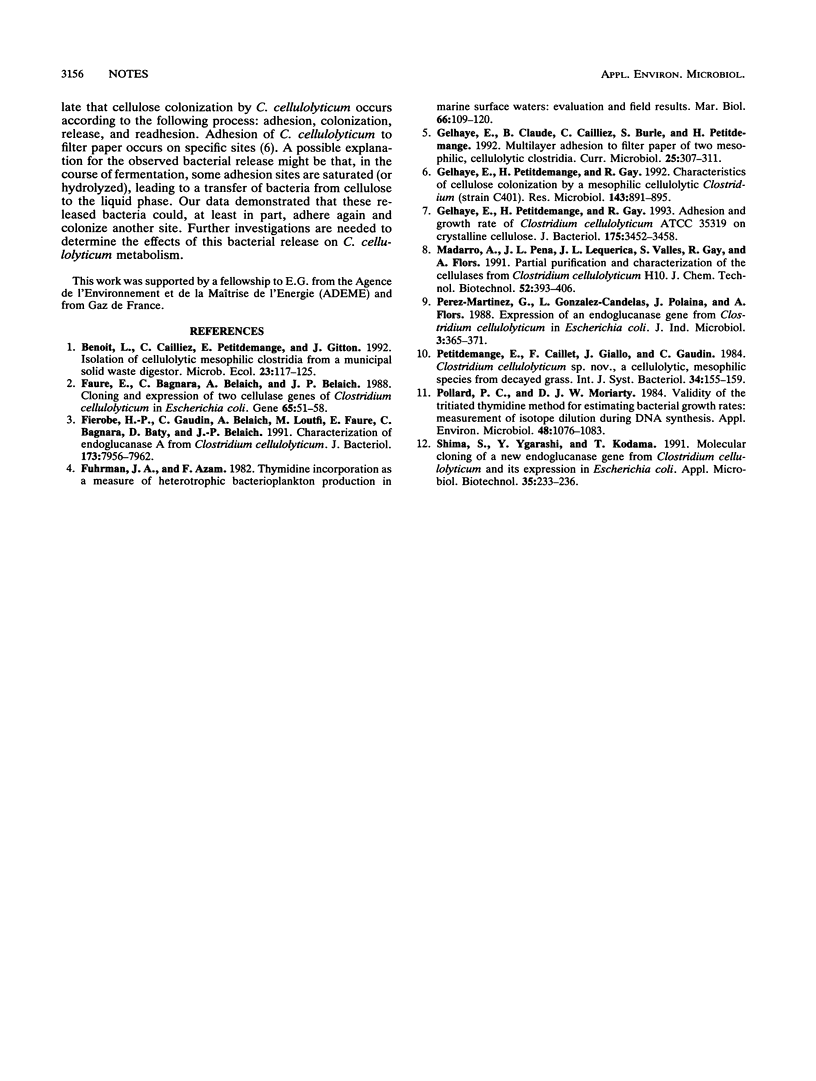Abstract
Cellulose colonization by Clostridium cellulolyticum was studied by using [methyl-3H]thymidine incorporation. The colonization process indicated that a part of the bacterial population was released from cellulose to the liquid phase before binding and colonizing another adhesion site of the cellulose. We postulate that cellulose colonization occurs according to the following process: adhesion, colonization, release, and readhesion.
Full text
PDF


Selected References
These references are in PubMed. This may not be the complete list of references from this article.
- Faure E., Bagnara C., Belaich A., Belaich J. P. Cloning and expression of two cellulase genes of Clostridium cellulolyticum in Escherichia coli. Gene. 1988 May 15;65(1):51–58. doi: 10.1016/0378-1119(88)90416-7. [DOI] [PubMed] [Google Scholar]
- Fierobe H. P., Gaudin C., Belaich A., Loutfi M., Faure E., Bagnara C., Baty D., Belaich J. P. Characterization of endoglucanase A from Clostridium cellulolyticum. J Bacteriol. 1991 Dec;173(24):7956–7962. doi: 10.1128/jb.173.24.7956-7962.1991. [DOI] [PMC free article] [PubMed] [Google Scholar]
- Gelhaye E., Petitdemange H., Gay R. Adhesion and growth rate of Clostridium cellulolyticum ATCC 35319 on crystalline cellulose. J Bacteriol. 1993 Jun;175(11):3452–3458. doi: 10.1128/jb.175.11.3452-3458.1993. [DOI] [PMC free article] [PubMed] [Google Scholar]
- Gelhaye E., Petitdemange H., Gay R. Characteristics of cellulose colonization by a mesophilic, cellulolytic Clostridium (strain C401). Res Microbiol. 1992 Nov-Dec;143(9):891–895. doi: 10.1016/0923-2508(92)90076-z. [DOI] [PubMed] [Google Scholar]
- Pollard P. C., Moriarty D. J. Validity of the tritiated thymidine method for estimating bacterial growth rates: measurement of isotope dilution during DNA synthesis. Appl Environ Microbiol. 1984 Dec;48(6):1076–1083. doi: 10.1128/aem.48.6.1076-1083.1984. [DOI] [PMC free article] [PubMed] [Google Scholar]


